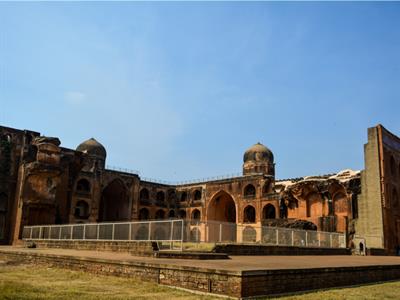PDF chapter test TRY NOW
CONTINUATION OF INDIAN EDUCATION SYSTEM:
The Indian education system continued in the form of ashrams, in temples and as indigenous schools. During the medieval period, maktabas and madrassas became part of the education system. During the pre-colonial period, indigenous education flourished in India. This was an extension of the formal system that had taken roots earlier. This system was mostly religious and spiritual form of education. Tols in Bengal, pathshalas in western India, chatuspadis in Bihar, and similar schools existed in other parts of India. Local resources via donations supported education. References in texts and memoirs inform that villagers also supported education in southern India.
As we understand, the ancient education system of India focused on the holistic development of the students, both inner and outer self, thus preparing them for life. Education was free and not centralised. Its foundations were laid in the rich cultural traditions of India thereby helping in the development of the physical, intellectual, spiritual and artistic aspects of life holistically.
Our present day education system has a lot to learn from the ancient education system of India. Therefore, the stress is being laid on connecting learning to the world outside the school. Today educationists recognise the role and importance of multilingual and multicultural education, thereby connecting the ancient and the traditional knowledge with contemporary learning.
Explanation:
Like all things that evolve under socio-political circumstances, Education in India too evolved. From Gurukuls, it progressed to ashrams in temples and as local schools were established in different parts of the town. While all these had a touch of the Hindu principles and doctrines, the Mughal influence in India established Makthabas or Madrasas, where subjects like poetry, math, history were taught with respect to Islamic traditions. Around this time, indigenous education flourished in India, which was basically a system where one taught models, methods that were aligned to a particular culture and encouraged local level decision making.

A Madrasa in Karnataka
In different parts of India, formal education was given with reference to their own local needs and spaces that were available. The South had Agraharams, Bengal had Tols, Chatuspadis in Bihar were different forms of schools that focussed on different areas. This system was mostly religious and spiritual form of education. The society as a collective came forward to educate each other. While the rich contributed and sponsored for the education of young candidates, even villagers gave a small contribution in South India, as referred to in Books and Memoirs written by researchers.
The Ancient Education system focussed not only on external growth but also internal. In today's society, one may have degrees attached to their names but may have less knowledge on how one is to conduct himself or the impact of the degree with which he can serve the society. But Early education system was free and prepared the students to face life. It focused on the whole, as it aimed at holistic development. Our present day education can take inspiration from the ancient ways of learning from the outside world and not just books. Educationists are stressing the importance of varied cultural beliefs being inculcated into education, thereby making it holistic.
Words with difficult meaning:
| S.No | Words | Meaning |
1 | Indigenous | Living or growing in the place where they are from originally |
2 | Multicultural | Pertaining to various cultures |
3 | Ashrams | Place where one rests, when withdrawing from the society |
4 | Memoirs | A person's written account of his/her own life and experiences |
Reference:
National Council of Educational Research and Training (2008). It so happened. Ancient Education System of India (pp. 89-97). Published at the Publication Division by the Secretary, National Council of Educational Research and Training, Sri Aurobindo Marg, New Delhi.
